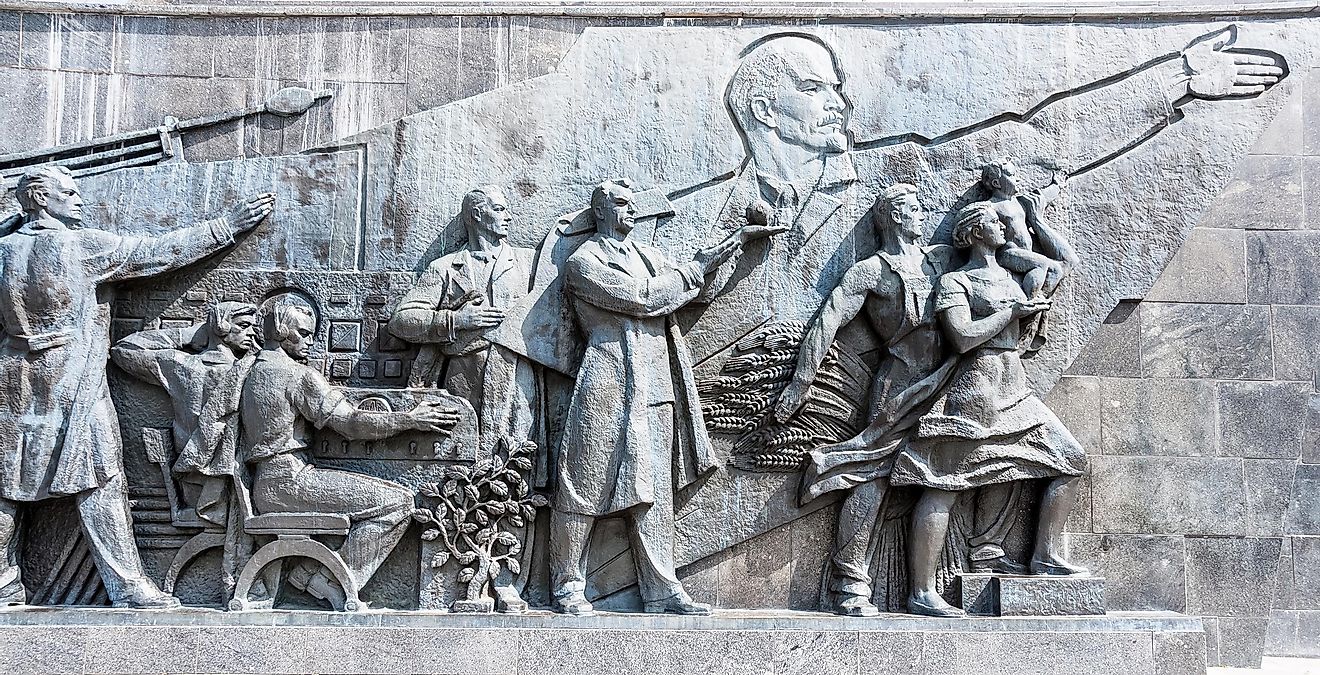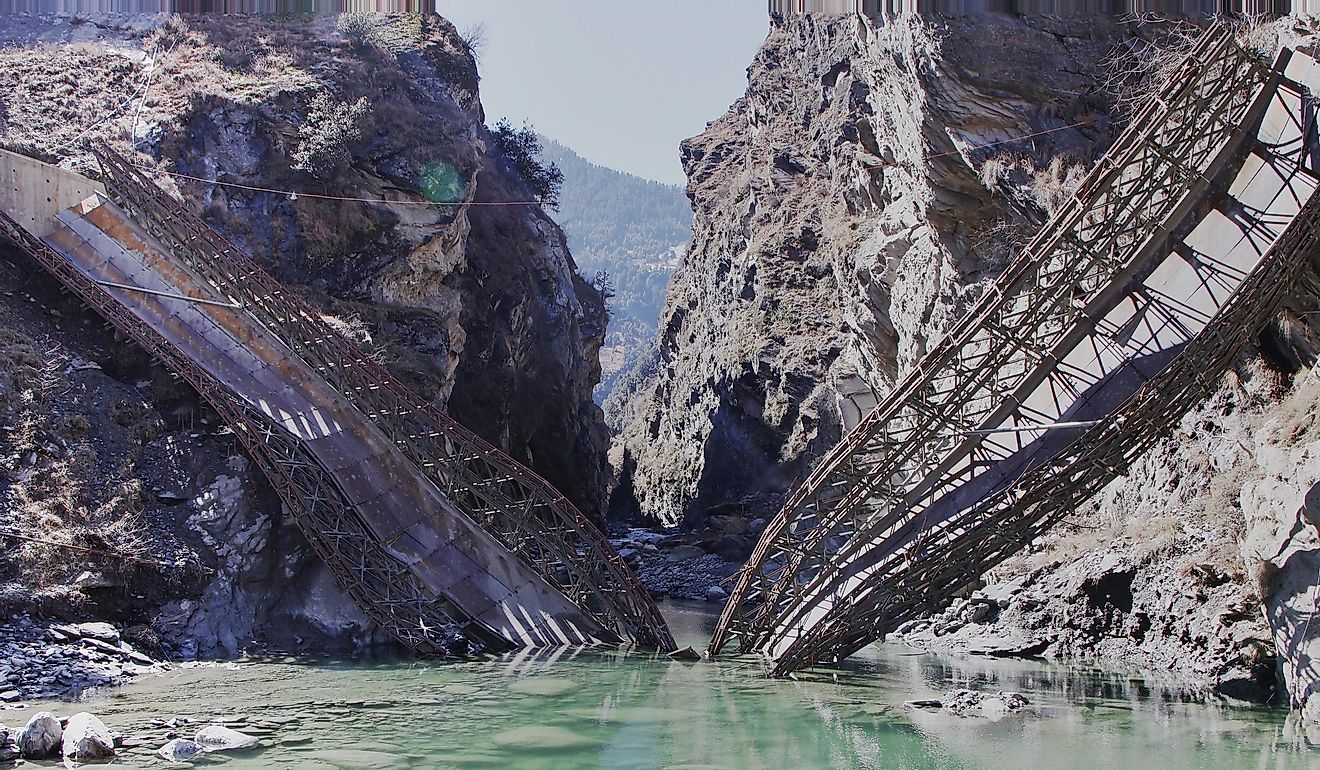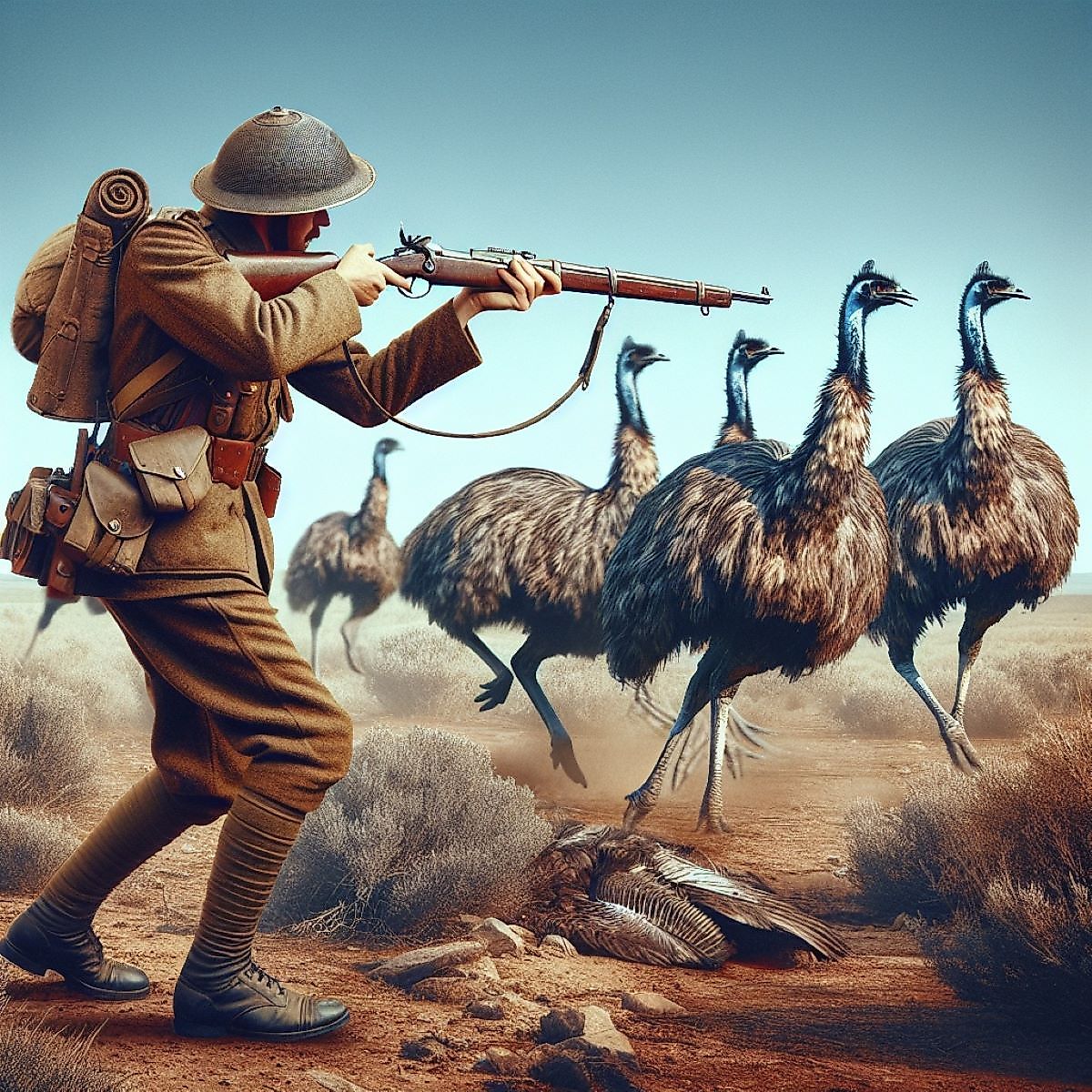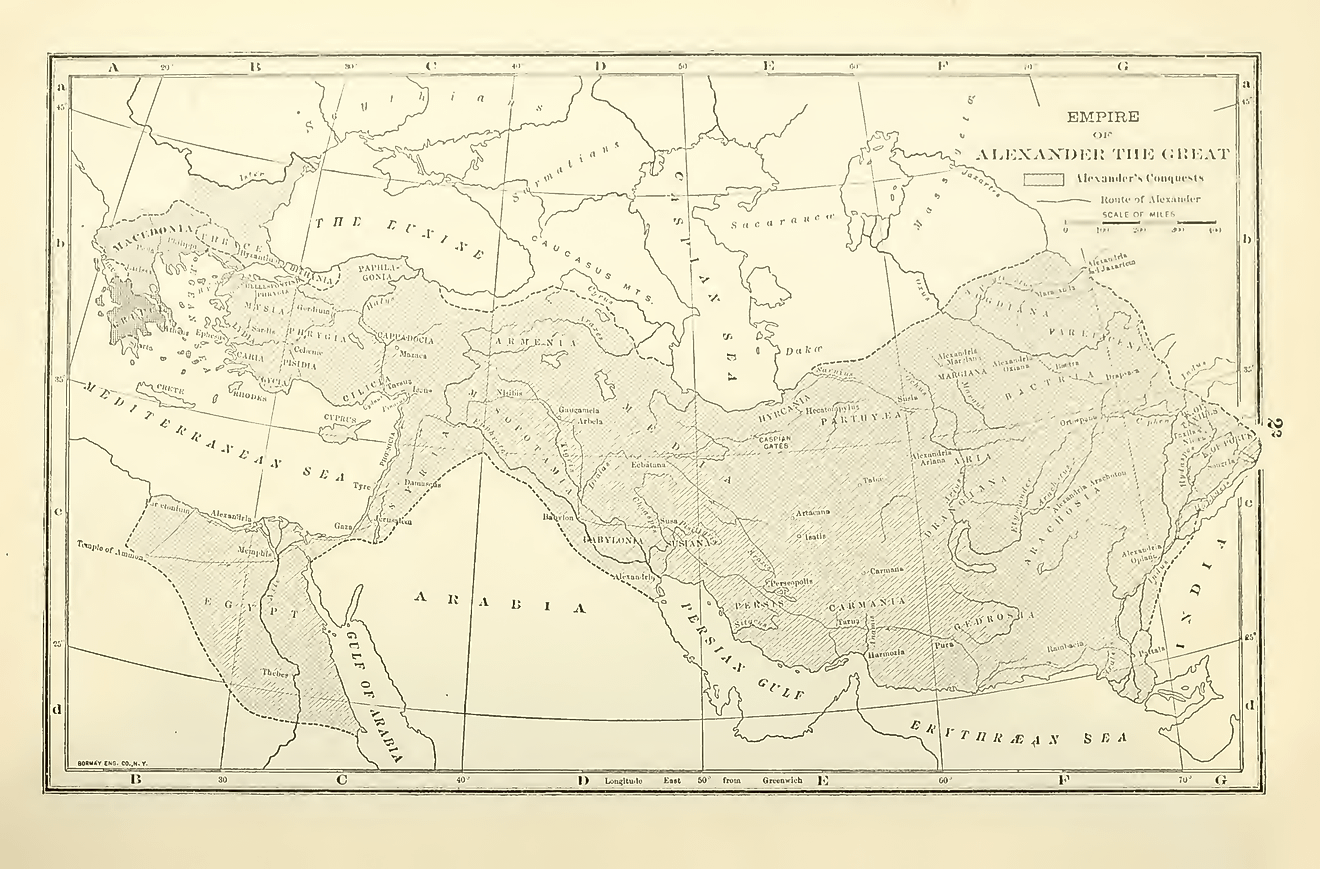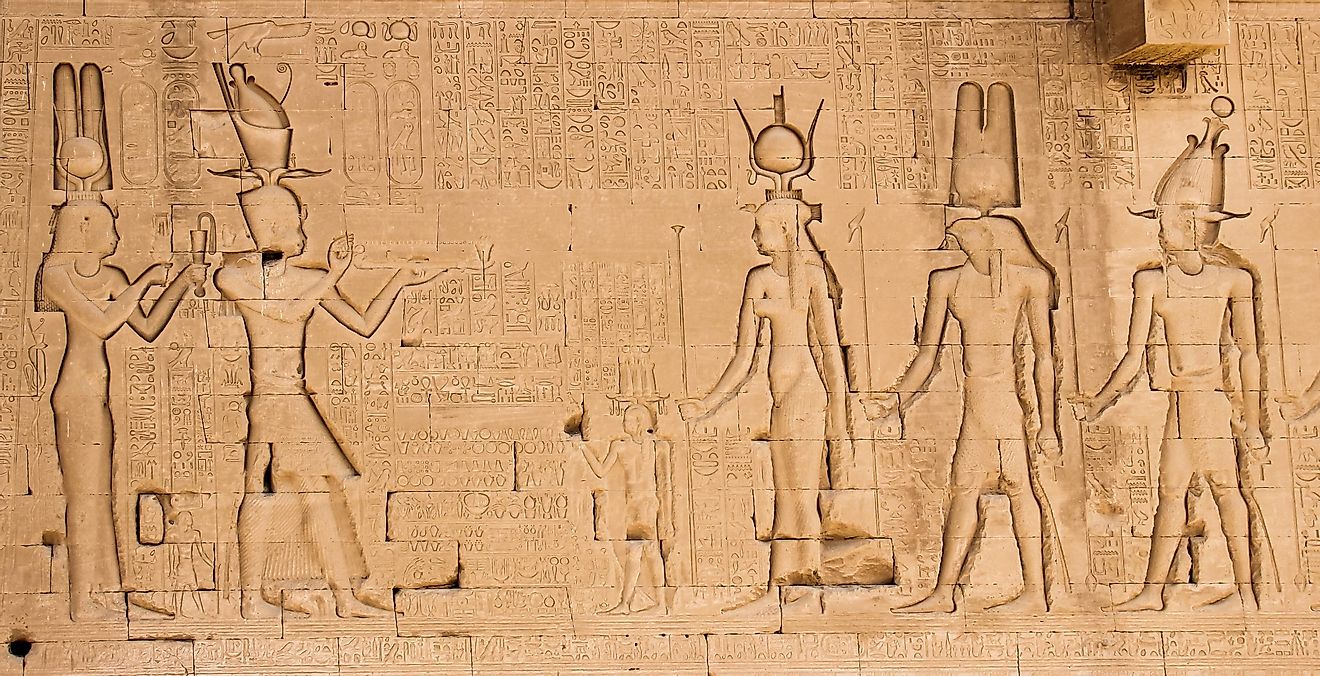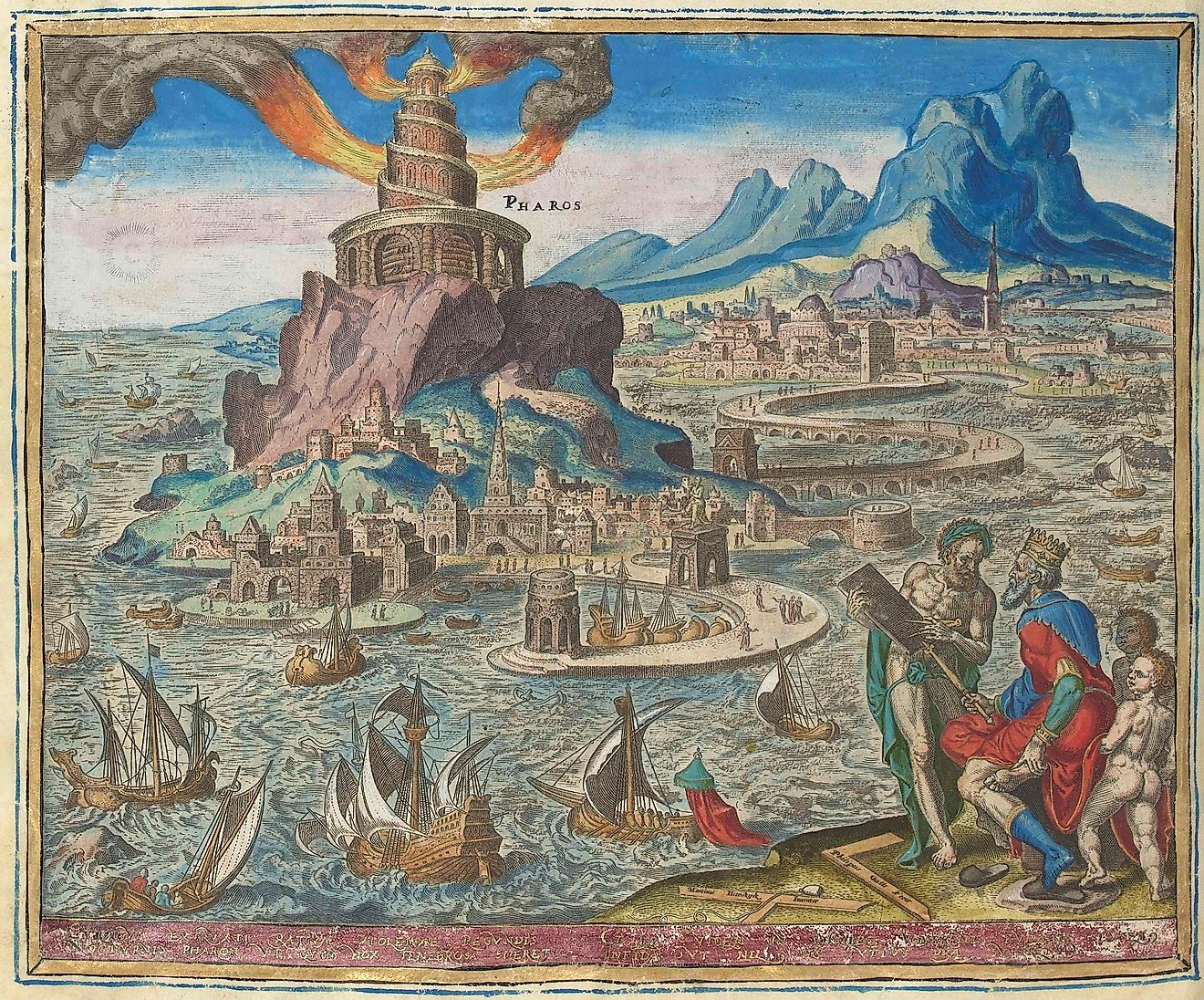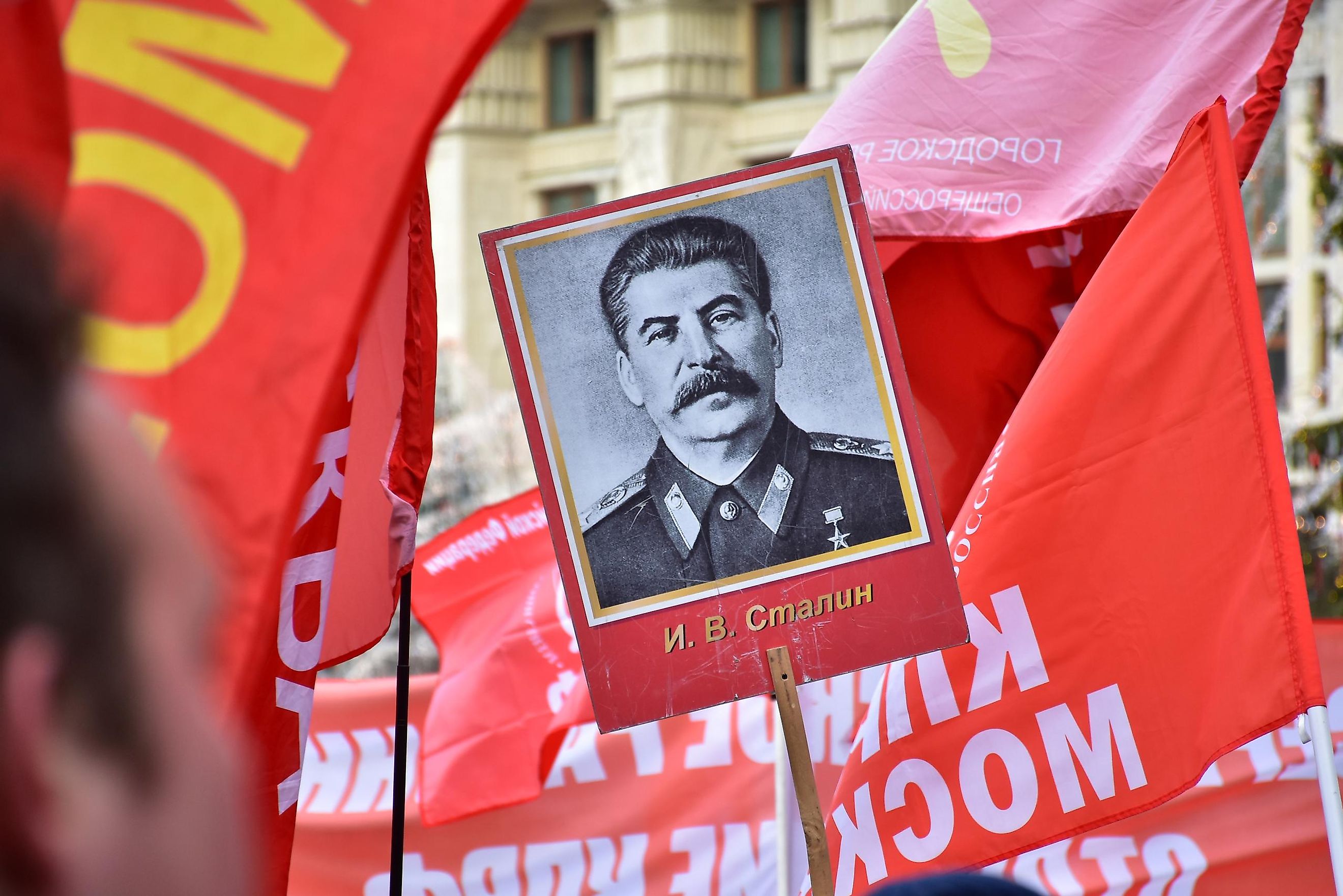
Leaders Throughout The History Of The Soviet Union
The leader of an authoritarian regime has a distinct power to shape that country's present and future. Therefore, it is important to know who the leaders of the Soviet Union (USSR) were to comprehend why they enacted particular policies and to understand why certain shifts in the country's trajectory occurred. Furthermore, the nature of different Soviet leaders' rule provides insights into the inner workings of the USSR's political system.
Vladimir Lenin
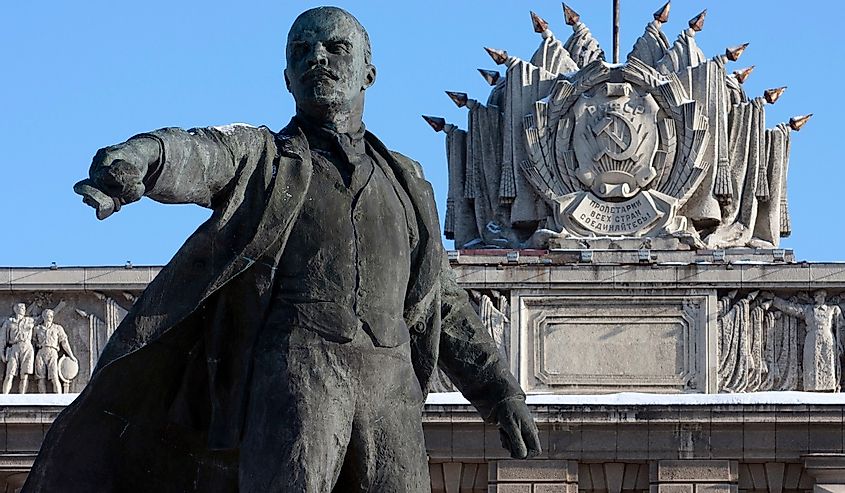
Vladimir Lenin was born in Simbirsk (now Ulyanovsk), the Russian Empire, in 1870. His family was middle-class, with his father working in the education system. Despite being fairly well off, Lenin possessed an intense hatred of the monarchy, as his brother was executed for trying to kill the Tsar. This distaste increased when Lenin went to university and studied socialist literature, notably What Is To Be Done by Nikolay Chernyshevsky and The Communist Manifesto by Karl Marx.
By the 1900s, several Marxist parties were challenging the Tsar's authority throughout the empire. The one to which Lenin belonged, the Bolsheviks, thought that Russia should move from serfdom to communism. This was in contrast to the Mensheviks, who believed that a society needed to enter the capitalist stage of development before a communist revolution occurred.
Upon the outbreak of World War I in 1914, the anti-Tsarist sentiment was no longer tolerated and Lenin was exiled from the empire. However, by 1917, the war was a disaster and the February Revolution resulted in the Tsar being overthrown. Learning of this news, Lenin returned to Russia with the help of the German government. Thereafter, he led the Bolsheviks to power in the October Revolution, in which they seized control of the capital's (Petrograd, now Saint Petersburg) transportation, communication, and utility hubs.
The revolution did not come without pushback. Furthermore, Lenin's first main action as Soviet leader, removing Russia from World War I, was controversial, as it entailed giving up a significant swath of Russia's European territory to Germany. All this meant that the country descended into civil war. Fought between the pro-communist Red Army and the anti-communist White Army, the conflict lasted from around November 1917 to June 1923. Superior tactics and anti-monarchist sentiment among the peasants contributed to the Reds' winning. However, despite this victory, Lenin's health was declining, and he died on January 21st, 1924.
Joseph Stalin
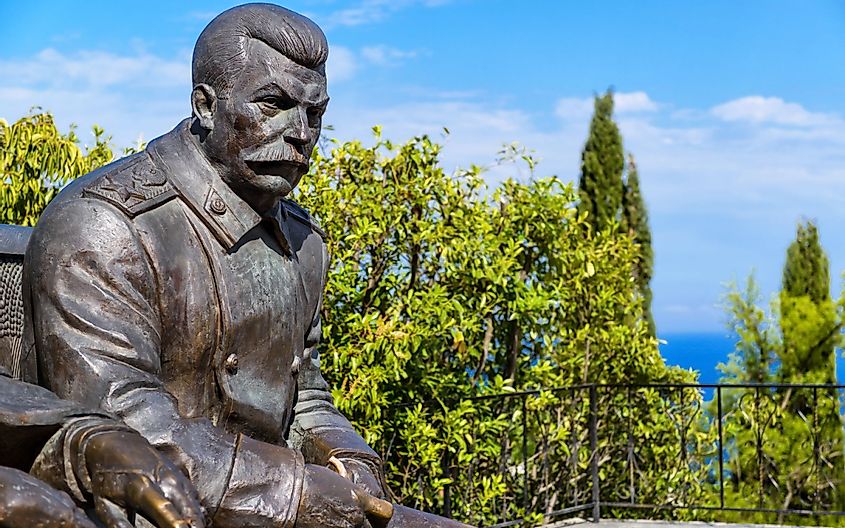
Joseph Stalin lacked the intellectual fortitude of the other Communist Party elites. However, having been born in 1878 in Georgia, the far reaches of the Russian Empire, this upbringing provided him with cunning practicality, and ruthlessness. Thus, during Lenin's funeral, Stalin portrayed the former Soviet leader as a god, and himself as his disciple. Throughout the 1920s, Stalin then used his position as General Secretary to place his supporters in key bureaucratic positions. By 1929, Stalin was the most powerful member of the Communist Party and the de facto leader of the USSR.
Stalin's reign was the deadliest in the Soviet Union's history. In the early 1930s, he enacted a collectivization campaign and brought all the farms under state control. This process resulted in a mass famine from 1932-1933, leading to 5.7 to 8.7 million deaths—most of which were in Ukraine and Kazakhstan. The Great Purge of 1936-1938 saw at least another 750,000 people die as Stalin executed and imprisoned key members of the military, government, and civil service in a paranoid frenzy. He also led the Soviet Union through World War II. Indeed, despite being distraught over the German invasion of the USSR in 1941, Stalin pulled himself together and oversaw the November 7th Revolution Day parade. This display provided a massive boost to morale across the Soviet Union, and the Red Army managed to beat back the Germans.
By 1945, Nazi Germany fell. However, tensions caused by the Soviet occupation of Eastern Europe then led to the Cold War. Stalin caused the first major Cold War crisis in 1948 when he cut off all ground transportation to Berlin. Known as the Berlin Blockade, it ended on May 12th, 1949, as the Berlin Airlift proved too effective at supplying the city. In the early 1950s, Stalin became increasingly conspiratorial and in September 1952, several Kremlin doctors were killed for supposedly plotting to murder high-ranking Soviet officials. Rumors of Stalin planning something akin to a genocide against Soviet Jews also emerged. However, before any mass killings began, Stalin died on March 5th, 1953.
Nikita Khrushchev
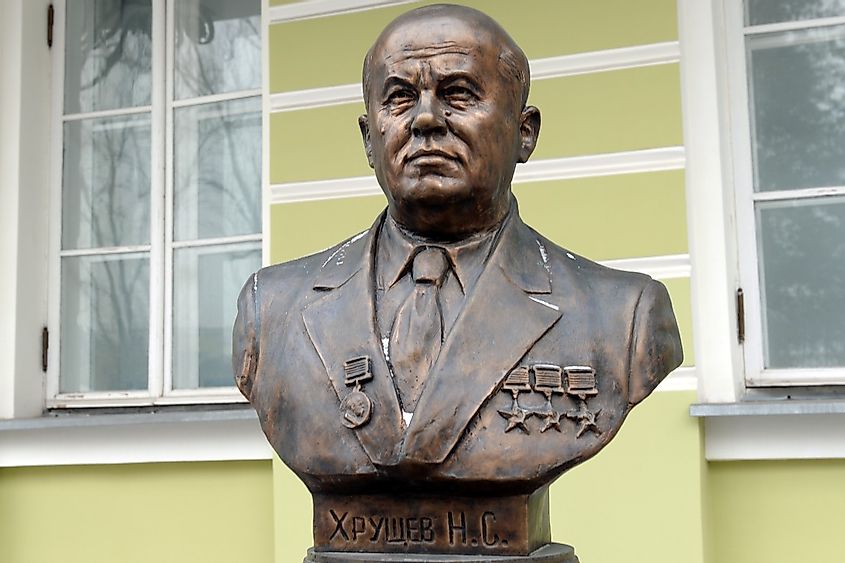
Born in 1894 on the border between Russia and Ukraine, Nikita Khrushchev spent his younger years working his way up the ranks of the Communist Party. Thus, following Stalin's death, he was one of the elites vying for power. After a two-year struggle, Khrushchev emerged as the leader of the party and the country. As General Secretary, he took a very different approach to Stalin. Indeed, at the 20th Party Congress in February 1956, Khrushchev denounced Stalin's use of violence and his cult of personality. He also freed some of some prisoners from the Gulags and allowed a relatively increased ability to voice dissent.
Khrushchev also tried to tone down the Cold War. Therefore, he met with American President Eisenhower in 1955, along with the French Premier and British Prime Minister. Following this visit, he also made a visit to the United States in 1959. However, despite these improvements, Khrushchev’s reign was somewhat oxymoronic. For instance, he oversaw the invasion of Hungary in 1956, in which Soviet troops deposed the moderate Imre Nagy. Furthermore, Khrushchev approved the building of the Berlin Wall to prevent people from fleeing to the West in 1961. Finally, he placed nuclear missiles in Cuba in 1962, resulting in the United States and USSR coming perilously close to nuclear war.
Leonid Brezhnev
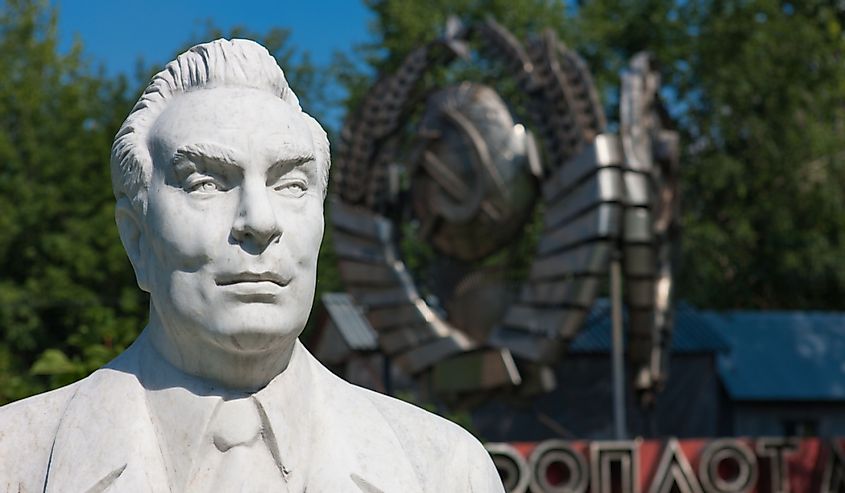
In October 1964, following the embarrassment of the Cuban Missile Crisis, Leonid Brezhnev replaced Khrushchev. Brezhnev undid many of Khrushchev's reforms, most notably clamping down on dissent. His rule also saw the rise of the Nomenklatura, high-ranking members of the Communist Party that made up the upper class of Soviet society. As a result, the USSR's economy stagnated, with living standards falling behind those in the West.
Despite these problems at home, Brezhnev's reign internationally saw a decrease in Cold War-based tensions. This détente was largely encouraged by the USSR's financial challenges, as continuing a nuclear arms race with the United States was becoming increasingly difficult economically. Therefore, with the 1972 Strategic Arms Limitation Talks Agreement (SALT I), Brezhnev and American President Richard Nixon agreed to limit the development of future nuclear weapons. Then, with the Helsinki Accords in 1975, both countries made plans for future cooperation via cultural exchanges and academic co-opts.
However, Brezhnev also oversaw a blatantly imperialistic foreign policy. For instance, the Red Army invaded Czechoslovakia in 1968, in a move reminiscent of the 1956 invasion of Hungary. Furthermore, Brezhnev approved the invasion of Afghanistan in 1979. Ultimately, following years of deteriorating health, Leonid Brezhnev died on November 10th, 1982.
Yuri Andropov and Konstantin Chernenko
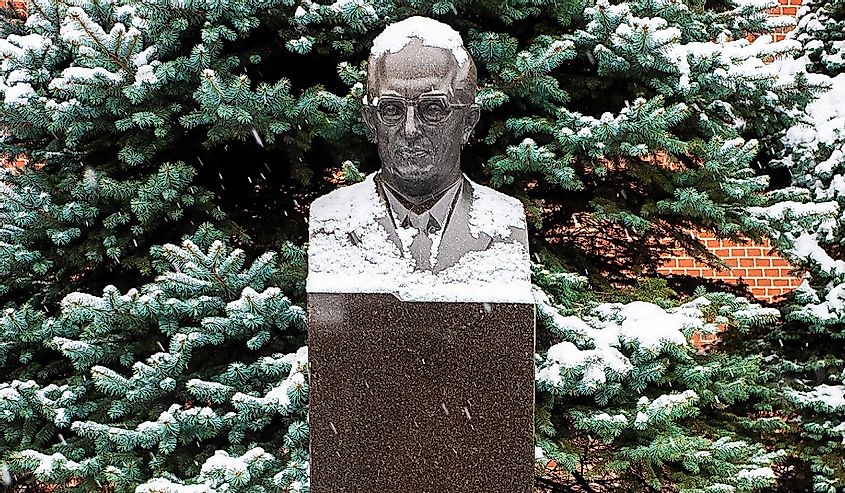
Following a brief power struggle, former Soviet Ambassador to Hungary, Yuri Andropov, became the next leader. Despite aspirations to improve the USSR's economy, Andropov was able to do very little as he quickly became sick and died on February 9th, 1984. Konstantin Chernenko succeeded him. From the beginning, Chernenko was ailing, barely able to raise his hand at Andropov's funeral. Chernenko died on March 10th, 1985, after accomplishing very little.
Mikhail Gorbachev
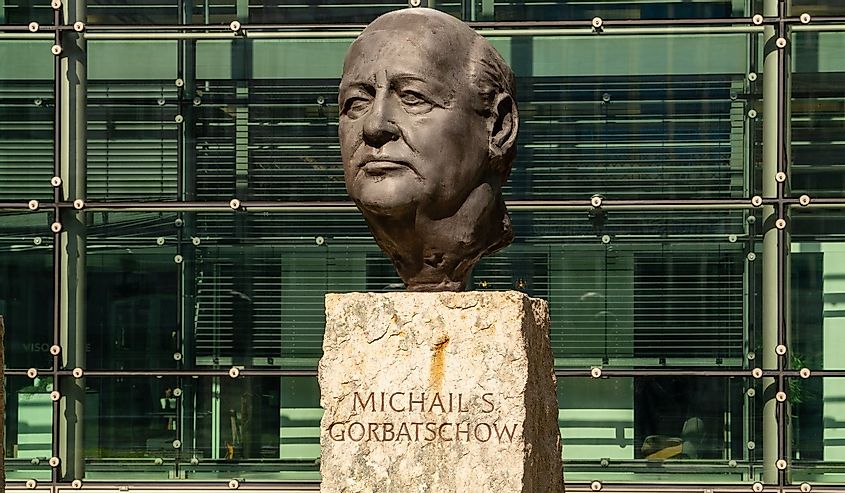
The day Chernenko died, Mikhail Gorbachev became the next leader. Much like his predecessors, Gorbachev had spent his life working his way up the ranks of the Communist Party. Now as General Secretary, he aimed to fix what he saw as fatal flaws in the Soviet system. Therefore, Gorbachev enacted two main policies. Perestroika (economic restructuring) opened up the USSR to some limited forms of free enterprise, and glasnost (openness) encouraged constructive criticism of the Soviet system. Gorbachev also entered into nuclear arms reduction treaties with the United States. In doing so, he tried to redirect the money previously spent on the arms race to the Soviet economy.
By 1989, the limited freedom provided by glasnost and perestroika had backfired and revolutionary movements were brewing across the communist world. By the end of the year, most countries in the Eastern Bloc had overthrown their governments in peaceful revolutions. In 1990, independence declarations occurred throughout the Soviet Union itself. Finally, the election of anti-Soviet politician Boris Yeltsin as President of the Russian Soviet Federative Socialist Republic in May 1990 signified the death knell for the country. Thus, on December 25th, 1991, Gorbachev relinquished his powers. The following day, the Soviet parliament voted the USSR out of existence.
Conclusion
The Soviet Union was one of the most important countries of the 20th century. Furthermore, understanding its leaders is crucial to comprehend how it changed and evolved. Indeed, beginning as a revolutionary state with Vladimir Lenin and ending amidst Gorbachev's failed reforms, the USSR's history was uniquely shaped by those in the upper echelons of power.
Past Leaders Of The Soviet Union
| Historical Leaders Of The Soviet Union | Era In Power |
|---|---|
| Vladimir Lenin | Formation-1924 |
| Josef Stalin | 1924-1953 |
| Georgy Malenkov | 1953-1955 |
| Nikita Krushchev | 1955-1964 |
| Leonid Brezhnev | 1964-1982 |
| Yuri Andropov | 1982-1984 |
| Konstantin Chernenko | 1984-1985 |
| Mikhail Gorbachev | 1985-1991 |
| Gennady Yanayev | 1991 |
